Infuser mugs with sieve

The tradition of drinking tea originates in ancient China. There are many ways to brew tea. The most common is making tea in a porcelain teapot. A feature of this method is that the tea leaves are poured into a strainer made of the same material as the teapot. The strainer is inserted inside and the tea leaves do not enter the tea drink. It is from here that the infusion mug with a sieve for brewing tea and various tea drinks from herbs, flowers and dried berries originates.
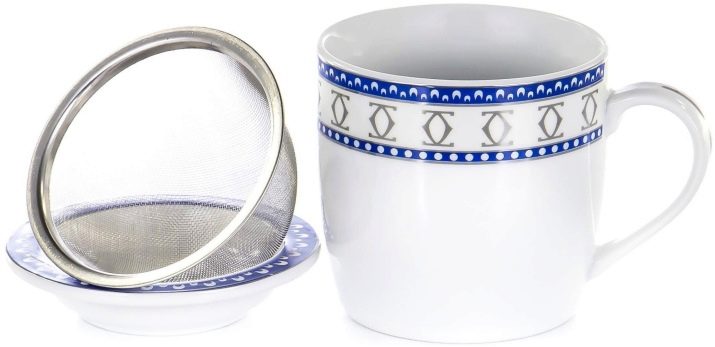
What are they for?
Mugs with a sieve are most often used in places where tea must be brewed in a Spartan environment, for example, in an office, on a train, or on a hike. However, some lovers of fresh and rich tea use such mugs at home. Such a cup is a vessel for brewing tea, inside of which there is a brewing strainer., which helps to filter out the thick from the liquid.
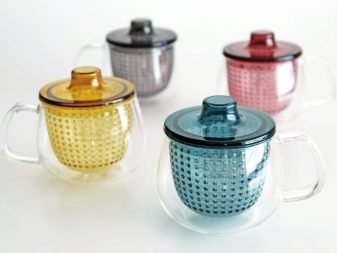
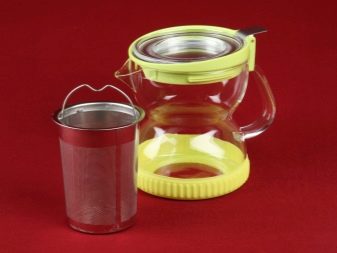
Such a mechanism was invented for convenience, the tea leaves do not fall into the cup of tea, but remains in a kind of "trap" from which it can be easily shaken out.
The top of the cup is covered with a lid so that the tea drink remains at the desired temperature longer. A saucer and a spoon can be added to the set with a lid. A saucer can be useful for putting in a filter, but a spoon is useful if you need to add sugar or honey and stir the drink.
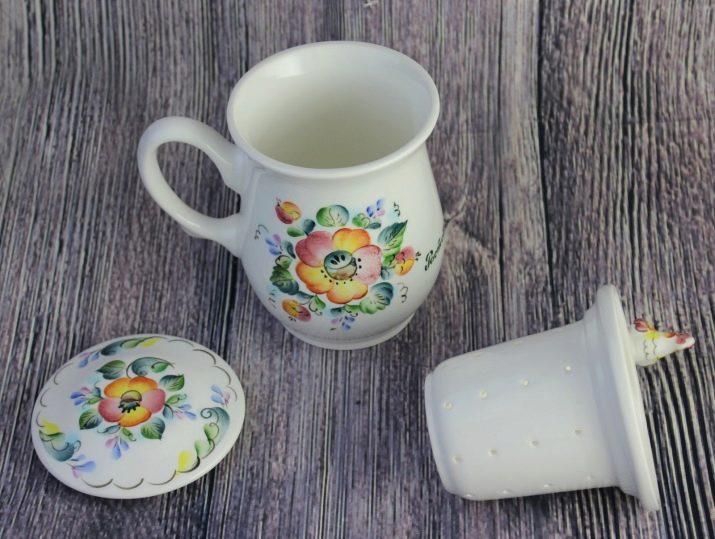
Manufacturing materials
The most used material for making tea utensils is ceramics. Pottery includes porcelain, earthenware and, of course, clay.
Clay is a natural material, without additional impurities and additives. For the production of such utensils, a variety of red clay is used. This material has absorbed natural strength and purity.The advantage of clay cups is that they heat up easily and cool slowly. Therefore, tea brewed in a clay mug stays warm longer. Clay products are quite light, but fragile, especially if the clay is not fired, but only dried.

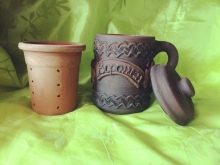
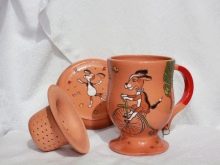
If the product is not glazed, then the liquids brewed in it will accumulate in the small pores of the clay over time, and the tea drink will begin to lose its taste and color.
Faience is a mixture of clay and gypsum, with the addition of other impurities. The cheapest and most common material for the production of dishes. Unlike simple red clay, clay with an admixture of gypsum sets and dries faster. Faience is always covered with glaze. If the mug is overheated, the icing may crack. Products made of earthenware are heavier than those made of clay, but stronger, they do not crack and break so much. Due to the glaze, they do not absorb odors.
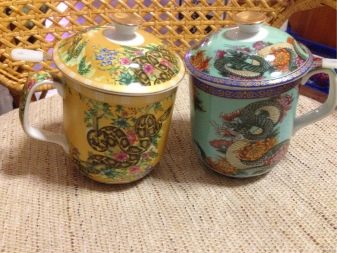
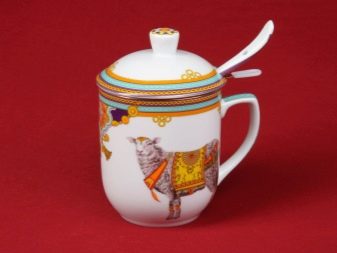
Porcelain Is a mixture of white clay, quartz and silicate, all of this is fired, resulting in a thin material transparent to the light.
The first country where porcelain was created was China. Therefore, traditional tea-drinking utensils are made from this material.
Thin, luminous, sonorous material, with graceful painting, gives luxury and charm to products made from it.
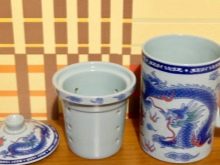
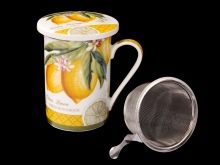

Glass is a material obtained by melting quartz sand under the influence of high temperatures. The result is a transparent material from which various products are made. Glassware has beautiful faceted patterns that give it an elegant look. Glass is a rather fragile material, but depending on the formula, we learned how to make glass less fragile, which further expanded the range of application of this material. The glass brew cup, due to its transparency, makes it possible to enjoy the color of the product contained.
A metal brewing mug with a sieve has conquered its market niche. A kind of mini-thermos has received great recognition among young people.
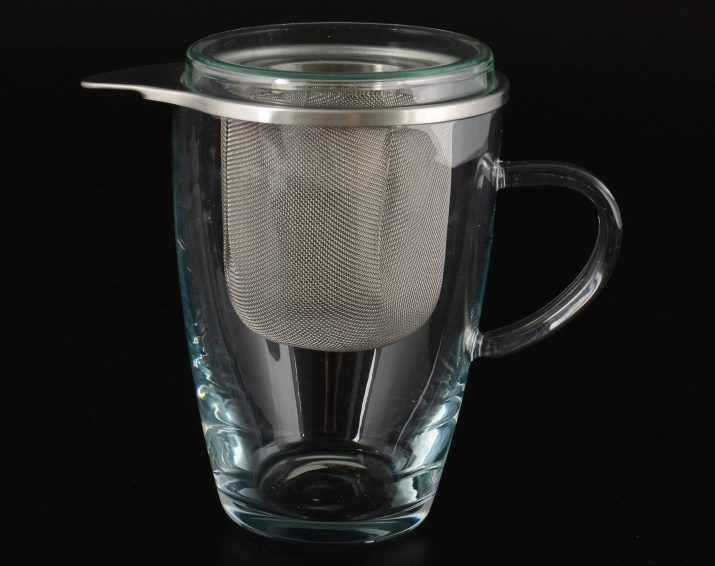
By keeping it warm, it helps you enjoy hot drinks on cold winter days. The mug does not look very attractive, but it is suitable for lovers of hiking and travel. You can easily brew tea in it on the train or by the fire in the forest.
Summing up, we can say that There are many materials for the production of teapots, for every taste... For the most demanding buyers at exhibitions, you can find exclusive models made of wood or other natural materials. These exhibits will be a worthy gift for friends or loved ones. However, they are not always practical. Much more often, such cups are only of a souvenir nature.
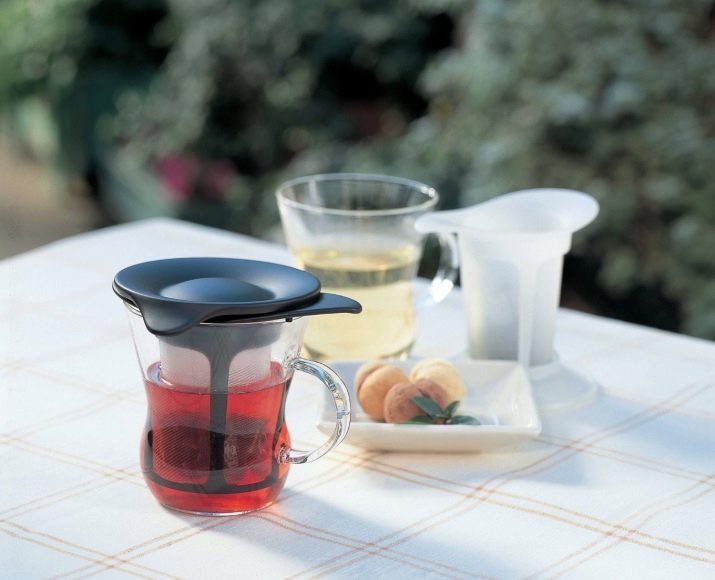
Dimensions (edit)
The size range of mugs is presented in various volumes. If you plan on enjoying your tea alone, a 250 to 380 ml mug is the way to go. Usually these cups are made of ceramic and have a metal filter. Various patterns or ornaments are applied to the walls. Additionally, there is a saucer and a lid. This option is convenient for office use.
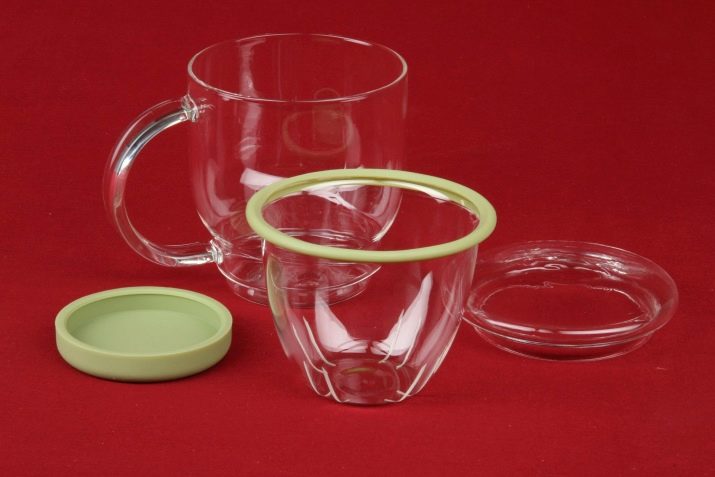
The saucer will keep drips of tea from spilling over your worktable. You can also put a filter here so that it does not interfere with drinking tea from a cup.
For those who like to enjoy the tea ceremony in the company, there are infusion cups with a volume of 400-500 ml. They have a spout for easy pouring of tea into cups. Drinking from such a cup is not very convenient.
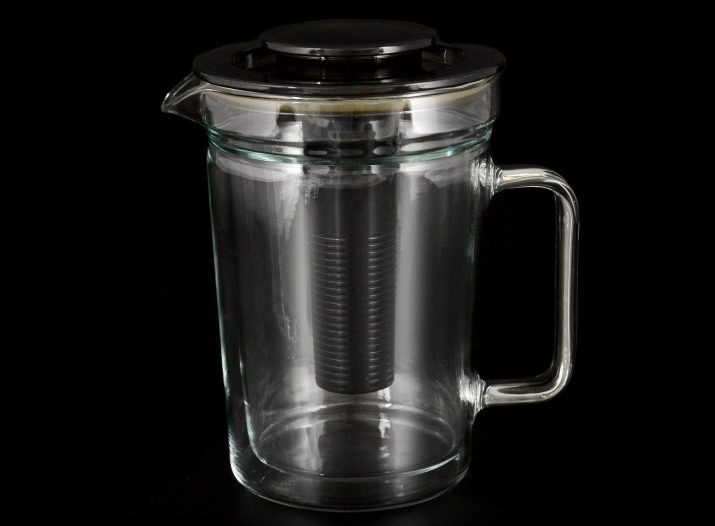
Features of the choice of filters
There are many types of tea in nature: green, black, herbal. In turn, they are divided into large-leaf or long-leaf. Herbal teas, depending on the raw materials, can be finely ground, coarsely ground, or even sold in filter bags.
Well, everything is clear with filter packets, they do not need additional filtering. And here if you prefer to drink long tea, which contains small tea leaves, or chamomile, you need to pick up a teapot with a metal sieve... Metal strainers have a rather dense cellular structure.In ceramic inserts, the water inlets are usually quite large compared to metal filter cells. Therefore, in cups with a ceramic filter, small tea leaves can spill into the cup.
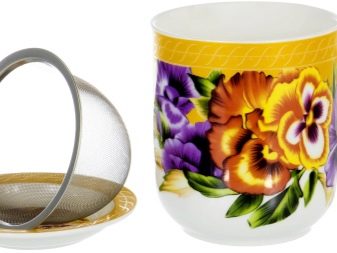
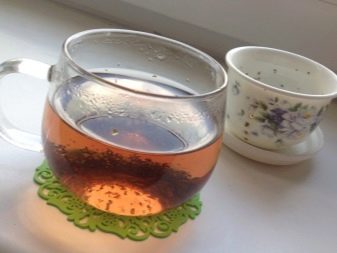
These mugs are perfect for lovers of large-leaf teas.
Metal filters darken over time, which can affect the taste of the drink. Ceramic inserts have a glazed coating that resembles glass in composition, which can be easily cleaned and does not accumulate tea bloom. Combined filters are found in porcelain tea mugs. A metal mesh is inserted into a porcelain container at the bottom, and such filters do not allow even the smallest tea leaves to get into a cup of tea. Porcelain cleans well and looks like new every time.

How to use?
You do not need detailed instructions to brew tea, however, there are certain tricks, which will help make your tea party brighter and richer.
- You need to brew tea in a warm mug, for this you should first rinse the mug with a sieve with hot water.
- Green tea should not be steeped in boiling water because all the beneficial antioxidants in green tea leaves will be destroyed.
- Green tea loves to be re-brewed. Brewing several times, the tea leaf steams well and gives off all the aromas and beneficial substances.
- Herbal teas should be infused for 10-15 minutes under a closed lid.
- Do not add lemon to very hot tea, as vitamin C is destroyed at high temperatures.
The choice of an infusion mug with a sieve is quite individual, but we can conclude that the most versatile and common will be ceramic products with ceramic filters.
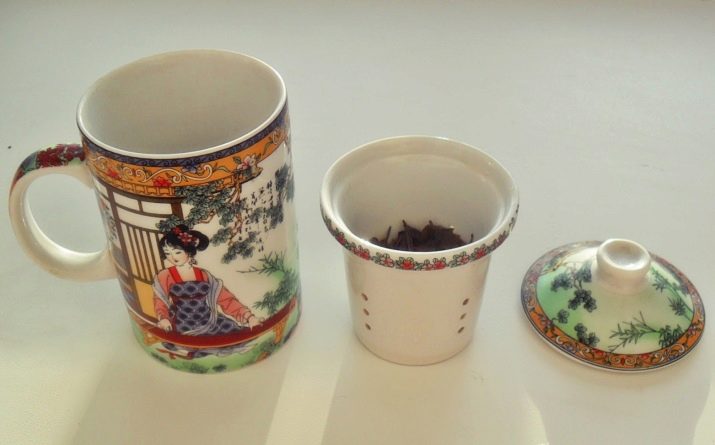
A lot of people give their preference to porcelain mugs, with porcelain or combined filters.
Utensils for brewing tea with metal filters do not have a very high price range, and they are also a popular product. Everyone chooses according to their budget and taste. The main rule is convenience, ease of use, durability and practicality.
See below for an overview of the infuser with sieve.








